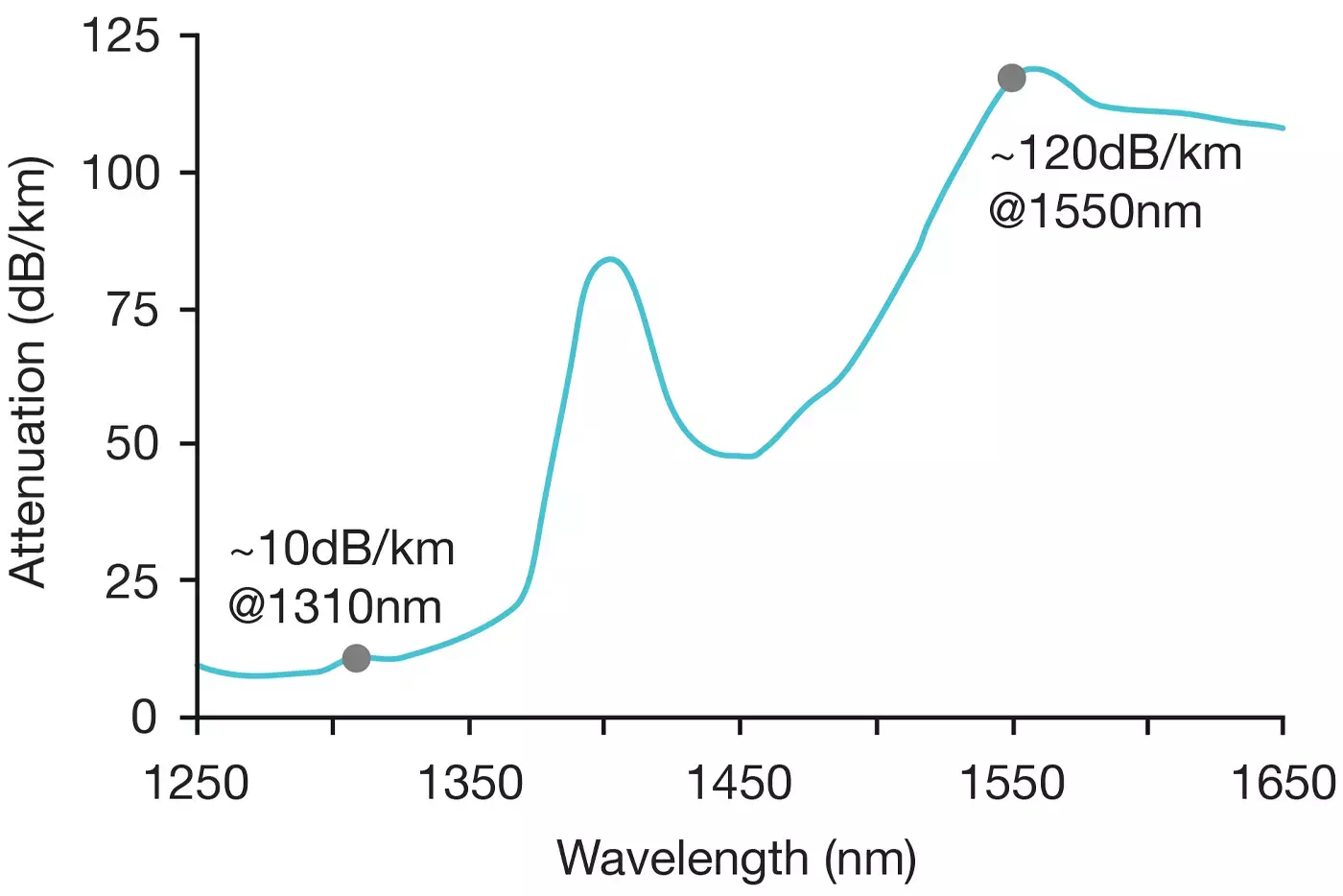Choosing the right photosensitive or single-mode fiber
Appropriately doped optical fibers exhibit photosensitivity in the Ultra-Violet (UV), which can be used to change their index. When this index change is written in stripes across the core a Fiber Bragg Grating (FBG) is made, which has transmission characteristics determined by the spatial profile of the index variation.
Fibers are photosensitive due to the presence of germanium. Telecoms fibers with a relatively low level of germanium will only permit weak gratings to be written. Their photosensitivity can be increased temporarily by hydrogen loading, although such gratings may not exhibit great stability over time.
Fibers with a much higher germanium content, includes some of those in the Fibercore Single-Mode (SM) series, enabling strong and stable gratings to be written without hydrogen loading. Fibercore Photosensitive (PS) fiber has a special high germanium-boron core composition that enhances photosensitivity and achieves a fiber design mode match to telecoms fiber for very low splice loss.
Photosensitive Fiber
Telecoms
| SM Series High NA Fibers
| PS Fiber
|
SM1500 Series Fiber
High Germania photosensitive fibers designed for 1550nm operation.
SM1500(6.4/80)
Compare with
| SM1500(5.3/80)
Note
| SM1500(4.2/80) & SM1500(4.2/125)
|
Applications of Photosensitive Fiber
Fibercore PS fiber is designed for FBG based telecoms component applications. It has a waveguide matched to telecoms fibers, so splice loss is very low. In typical device fiber lengths of just a meter or so, insertion loss is low at ~0.1dB @ 1550nm and 0.01dB @ 1310nm.
The spectral attenuation of PS fiber is higher than Germania only fibers, so is better suited where short device lengths are used, as there is no mode mismatch and splice loss is very low (~ 0.01dB) into telecoms fiber.

Figure 1. Typical spectral attenuation profile of PS Fiber
This means the combined loss across the device integrated into a telecoms system is low overall. With PS fiber there is low splice loss and low insertion loss over lengths of just a few meters.
Applications of Single-Mode (SM) Fiber
Fibercore SM series fibers are available with very high Numerical Apertures (NA) as a result of their high germanium doping. SM fibers with NA ~0.16 and ~0.2 offer very high photosensitivity for an easy inscription of strong and stable gratings. SM series fibers with NA ~0.3 are about as highly germanium doped as practically possible and so offer the highest available photosensitivity of a germanosilicate fiber.
Transmission losses are higher than telecoms fiber at ~1-2dB/km @ 1550nm, although this is low enough to enable the fibers to be incorporated into FBG arrays with a practical power budget.
High NA SM series fibers have a small core which leads to a mode field mismatch with telecoms fiber and requires optimized conditions to minimize splice loss. Typical splice losses might be ~0.5dB with higher NA fibers and as much as ~1dB with the very smallest cores. Splice optimization can be achieved by the use of a bridging fiber, where loss can be reduced by several tenths of a dB. With small core high germania fibers there is a trade-off between photosensitivity and splice loss.
Summary
Consider high NA single-mode fibers where FBGs are integrated within relatively long fiber lengths and choose between the SM1500 types for the best trade-off between photosensitivity and splice loss. For devices based on short fiber sections, consider photosensitive fiber as it has high photosensitivity and low splice loss to telecoms fiber.